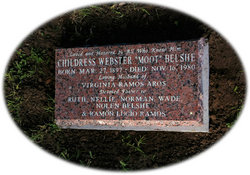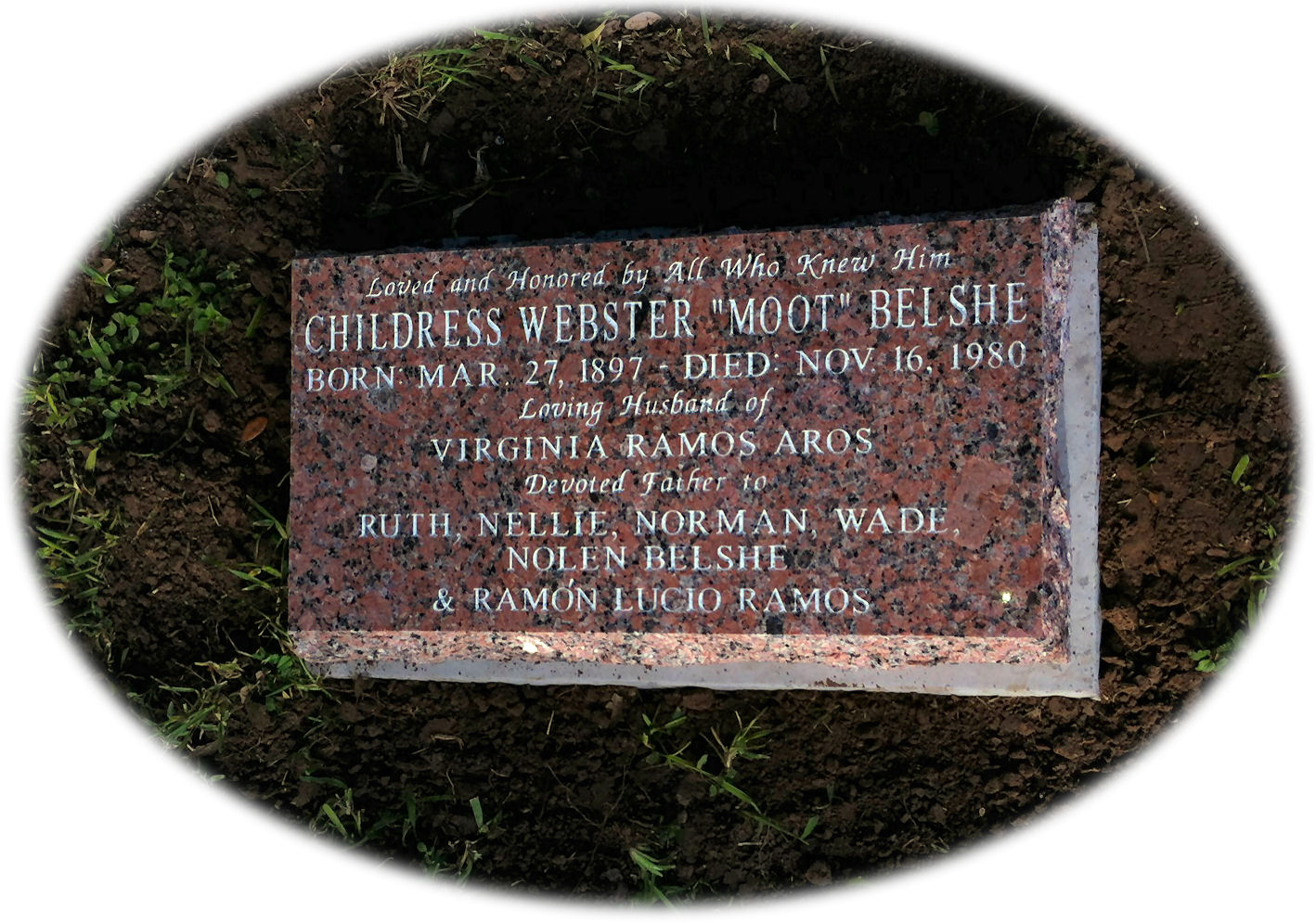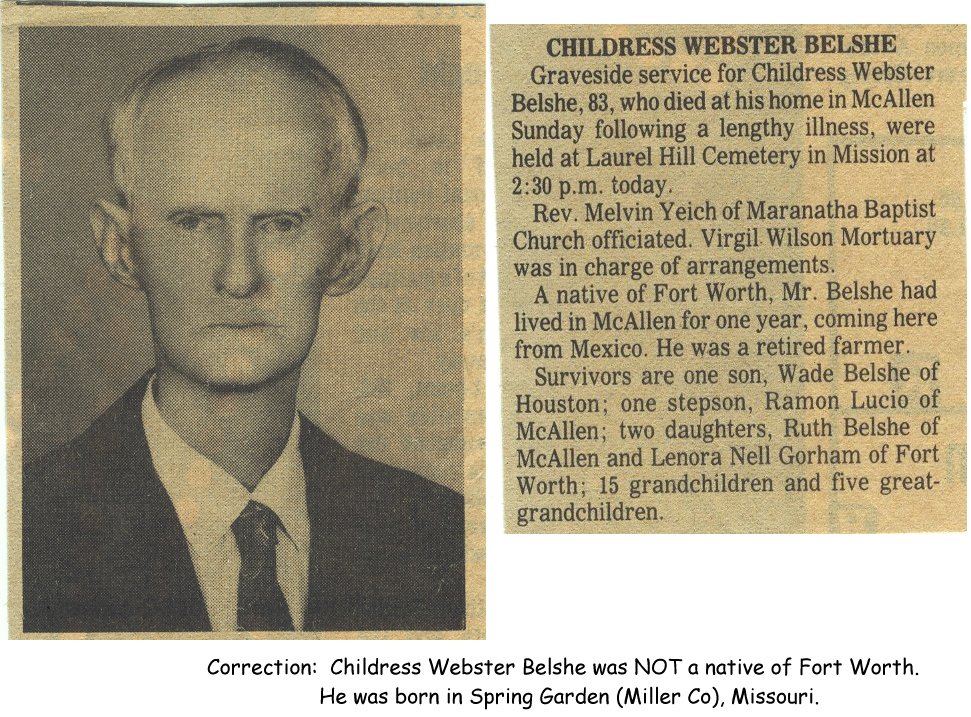At the time of the move to Mexico, Childress was about 9 years old, and except for a few years while he waited out the internal revolution that started in 1910, he lived and worked for many decades in what was officially known as the Blalock Mexico Colony. The war was initially intended to result in the ouster of President (dictator, really) Porfirio Díaz. However, the beleaguered president within the first few years of the war decided to self-exile himself to Europe. However, the war raged on since there were several factions left behind who were all vying to fill the power vacuum.
The 1910 war ended in 1917, and many but not all of the settlers moved back to their pillaged homes in Chamal Nuevo. Most of the returnee's, including Childress' father, filed formal grievances in court against the government of Mexico in which they demanded restitution for destroyed, stolen and otherwise 'disappeared' real property, farming equipment and livestock (including cattle, donkeys, mules, oxen, etc).
On his farm, Childress planted about an 800-tree orange orchard, which produced two crops of oranges per year for many, many years. He also had several varieties of aguacates (known as avocados in English) and mangoes which served as cash crops, too. In his open fields he grew a variety of grain crops, such as maize (corn), ajonjoli (sesame seed) and a grain called Hi-Gear which was only for the consumption by cattle. The stalks of Hi-Gear and maize were placed into in-ground silos. The fermented stalks (rich in sugars) turned into was called silage was favorite food the milk cattle that he raised.
Other cash crops included tomatoes, pomegranetes, lemons, limes and guayabas (aka guavas in English). The several head of milchows (Jerseys, Holsteins and Swiss) which he had produced copious amounts of milk. From that milk his wife, Virginia Ramos Aros de Belshe, derived, made and sold milk, cheese and butter. The nearly 30 chickens that the family maintained provided a steady supply of eggs and poultry. Most mornings there was a steady stream of Mexican folks from the community coming to their home to purchase milk, cheese, butter and eggs.
Childress and his sons were avid hunters, so the family's supply of meat for the table included deer, squirrel and rabbit in addition to the domesticated hogs and the wild cattle that roamed the valley after escaping from domestic herds.
In the late '70s, Childress sold his farm. His children and his one live-in worker Rosalio had gone to the States and other parts of Mexico to raise their own families, and he approaching his 80s, he knew that he would no longer be able to manage and maintain the family farm by himself. After the sale, he moved to McAllen, where he resided with the older of his daughers, Ruth.
On Rosalio, mentioned earlier: As the story was told to me, Rosalio (surname unknown) was the son of a bricklayer who Childress had hired to make the cinderblocks which were then used by the bricklayer (albañil, in Spanish) to constuct a home with fire-proof walls, which was later topped with a non-flamable composite roof in the mid to late '50s. (Having had 2 or 3 thatched roof, log cabin homes burned to the ground by fires that had swept through the valley at various times, Childress and his family had had enough, so the cinderblock house was designed and built.)
In the final days of the bricklayer's part of the house's construction, his son, Rosalio, broached the subject with Childress of him living with the Belshe family. Childress was amenable to the change of venue for Rosalio, but only with the consent of his father. Such a move without consent would have been fraught with problems.
Within an hour or two after the bricklayer's crew (including Rosalio) departed the Belshe's homestead, Childress noticed Rosalio heading back toward the Belshe home pushing his bicycle and carrying a small suit case, which contained all his wordly goods.
Rosalio was a hard worker and dedicated to the Belshe family and they to him. He was considered a family member, usually eating with the family and sleeping in the house. It's not known if there was ever any formal adoption. He was a minor at the time he moved in.
Final note: Another child (Nellie) was born of CW and Virgina Belshe, who is not listed under the Family Links section because though born in 1929 she's still alive and quite well.
Lee Veal
Grandson of Childress W Belshe
At the time of the move to Mexico, Childress was about 9 years old, and except for a few years while he waited out the internal revolution that started in 1910, he lived and worked for many decades in what was officially known as the Blalock Mexico Colony. The war was initially intended to result in the ouster of President (dictator, really) Porfirio Díaz. However, the beleaguered president within the first few years of the war decided to self-exile himself to Europe. However, the war raged on since there were several factions left behind who were all vying to fill the power vacuum.
The 1910 war ended in 1917, and many but not all of the settlers moved back to their pillaged homes in Chamal Nuevo. Most of the returnee's, including Childress' father, filed formal grievances in court against the government of Mexico in which they demanded restitution for destroyed, stolen and otherwise 'disappeared' real property, farming equipment and livestock (including cattle, donkeys, mules, oxen, etc).
On his farm, Childress planted about an 800-tree orange orchard, which produced two crops of oranges per year for many, many years. He also had several varieties of aguacates (known as avocados in English) and mangoes which served as cash crops, too. In his open fields he grew a variety of grain crops, such as maize (corn), ajonjoli (sesame seed) and a grain called Hi-Gear which was only for the consumption by cattle. The stalks of Hi-Gear and maize were placed into in-ground silos. The fermented stalks (rich in sugars) turned into was called silage was favorite food the milk cattle that he raised.
Other cash crops included tomatoes, pomegranetes, lemons, limes and guayabas (aka guavas in English). The several head of milchows (Jerseys, Holsteins and Swiss) which he had produced copious amounts of milk. From that milk his wife, Virginia Ramos Aros de Belshe, derived, made and sold milk, cheese and butter. The nearly 30 chickens that the family maintained provided a steady supply of eggs and poultry. Most mornings there was a steady stream of Mexican folks from the community coming to their home to purchase milk, cheese, butter and eggs.
Childress and his sons were avid hunters, so the family's supply of meat for the table included deer, squirrel and rabbit in addition to the domesticated hogs and the wild cattle that roamed the valley after escaping from domestic herds.
In the late '70s, Childress sold his farm. His children and his one live-in worker Rosalio had gone to the States and other parts of Mexico to raise their own families, and he approaching his 80s, he knew that he would no longer be able to manage and maintain the family farm by himself. After the sale, he moved to McAllen, where he resided with the older of his daughers, Ruth.
On Rosalio, mentioned earlier: As the story was told to me, Rosalio (surname unknown) was the son of a bricklayer who Childress had hired to make the cinderblocks which were then used by the bricklayer (albañil, in Spanish) to constuct a home with fire-proof walls, which was later topped with a non-flamable composite roof in the mid to late '50s. (Having had 2 or 3 thatched roof, log cabin homes burned to the ground by fires that had swept through the valley at various times, Childress and his family had had enough, so the cinderblock house was designed and built.)
In the final days of the bricklayer's part of the house's construction, his son, Rosalio, broached the subject with Childress of him living with the Belshe family. Childress was amenable to the change of venue for Rosalio, but only with the consent of his father. Such a move without consent would have been fraught with problems.
Within an hour or two after the bricklayer's crew (including Rosalio) departed the Belshe's homestead, Childress noticed Rosalio heading back toward the Belshe home pushing his bicycle and carrying a small suit case, which contained all his wordly goods.
Rosalio was a hard worker and dedicated to the Belshe family and they to him. He was considered a family member, usually eating with the family and sleeping in the house. It's not known if there was ever any formal adoption. He was a minor at the time he moved in.
Final note: Another child (Nellie) was born of CW and Virgina Belshe, who is not listed under the Family Links section because though born in 1929 she's still alive and quite well.
Lee Veal
Grandson of Childress W Belshe
Family Members
Sponsored by Ancestry
Advertisement
Advertisement

















